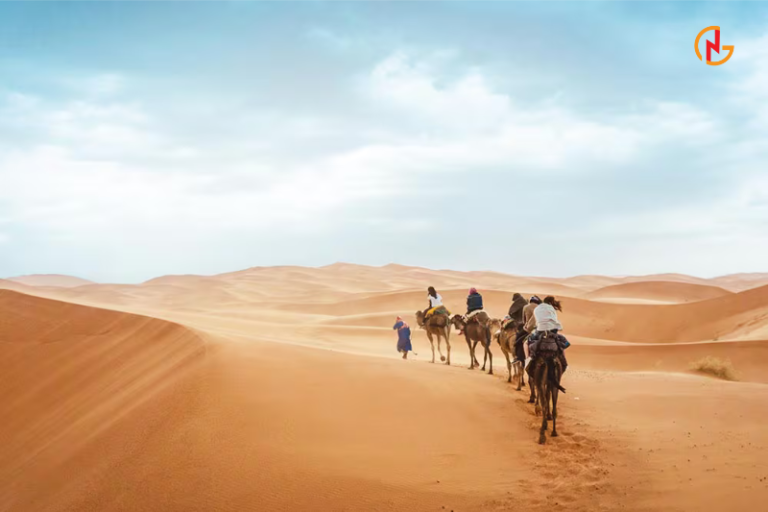When we think of deserts, images of vast, sandy landscapes and scorching sun often come to mind. Asia, the world’s largest continent, is home to some of the most impressive deserts on the planet. The Largest Desert in Asia NYT often highlighted for its size, unique ecosystem, and cultural significance, is an intriguing subject that captures the imagination of many. This article explores the Largest Desert in Asia NYT has spotlighted, providing insights into its geographical features, wildlife, and human history.
What is the Largest Desert in Asia NYT?
The Largest Desert in Asia NYT focuses on is the Gobi Desert, which spans parts of northern China and southern Mongolia. Covering over 1.3 million square kilometers, the Gobi Desert is not only the largest in Asia but also one of the largest cold deserts in the world. Unlike the typical image of endless sand dunes, the Gobi consists of rocky outcrops, gravel plains, and occasional sandy areas, making it a diverse and captivating landscape.
The Geography of the Gobi Desert
The Largest Desert in Asia NYT often describes is a diverse terrain that includes mountains, grasslands, and sand dunes. The Gobi’s climate is characterized by extreme temperatures, with scorching summers and freezing winters. This desert’s unique topography and harsh climate conditions create a stunning yet formidable environment that has shaped the lives of its inhabitants for centuries.
Wildlife of the Largest Desert in Asia NYT
Despite its arid conditions, the Largest Desert in Asia NYT has featured is teeming with life. The Gobi Desert is home to a variety of animals, including the elusive snow leopard, Bactrian camels, Gobi bears, and numerous species of birds and reptiles. The desert’s unique ecosystem supports a surprising array of flora and fauna adapted to survive in extreme conditions.
Endangered Species
The Largest Desert in Asia NYT has noted, particularly focuses on the conservation efforts to protect endangered species such as the Gobi bear, one of the rarest bears in the world. Conservation initiatives are crucial in preserving the delicate balance of life in the Gobi, ensuring that these unique creatures continue to thrive.
The Human History of the Largest Desert in Asia NYT
The Largest Desert in Asia NYT is not just about its natural beauty; it also holds a rich human history. The Gobi Desert was a critical part of the ancient Silk Road, a network of trade routes that connected Asia with Europe. This desert has witnessed countless travelers, traders, and explorers, making it a historical hub of cultural exchange.
Ancient Trade Routes
The Largest Desert in Asia NYT frequently highlights the role of the Gobi in ancient trade. Caravans carrying silk, spices, and other valuable goods once traversed the harsh terrain of the Gobi, contributing to the cultural and economic exchange between East and West. Today, remnants of this vibrant past can still be found, including ancient ruins, petroglyphs, and artifacts.
Environmental Challenges Facing the Largest Desert in Asia NYT
The Largest Desert in Asia NYT often emphasizes the environmental challenges facing the Gobi Desert. Desertification, climate change, and human activities pose significant threats to the fragile ecosystem of the Gobi. These issues are not only a concern for the wildlife but also for the nomadic communities that have called the Gobi home for generations.
Desertification and Climate Change
According to the Largest Desert in Asia NYT, desertification is one of the most pressing issues in the Gobi Desert. Expanding desert areas threaten arable land, water resources, and biodiversity. Climate change exacerbates these problems, leading to more frequent and severe dust storms, extreme temperatures, and unpredictable weather patterns.
Modern Exploration of the Largest Desert in Asia NYT
The Largest Desert in Asia NYT highlights the modern-day explorers and scientists who study the Gobi Desert. Researchers from around the world are drawn to the Gobi to study its unique geology, paleontology, and climate. Fossil discoveries, including dinosaur eggs and skeletons, have made the Gobi a hotbed for paleontological research, offering a glimpse into the Earth’s prehistoric past.
Scientific Discoveries
The Largest Desert in Asia NYT often showcases the groundbreaking scientific discoveries made in the Gobi. From unearthing fossils of ancient creatures to studying the impact of climate change on desert ecosystems, the Gobi continues to provide valuable insights that advance our understanding of the natural world.
Read Also: 127.0.0.1:57573: The Key to Localhost Connections and Troubleshooting
How to Experience the Largest Desert in Asia NYT
For those inspired by the Largest Desert in Asia NYT, exploring the Gobi Desert is an adventure of a lifetime. Visitors can embark on guided tours to experience the vast landscapes, visit ancient monasteries, and even stay in traditional yurts. Whether it’s trekking through the sand dunes or witnessing a stunning desert sunset, the Gobi offers a unique and unforgettable experience.
Eco-Tourism in the Gobi Desert
Eco-tourism is gaining popularity in the Largest Desert in Asia NYT features, as travelers seek sustainable ways to explore the Gobi’s natural beauty. Many tour operators focus on minimizing environmental impact, offering eco-friendly accommodations and promoting conservation awareness among visitors.
Conclusion
The Largest Desert in Asia NYT highlights, the Gobi Desert, is a remarkable and awe-inspiring landscape that has captivated explorers, scientists, and travelers for centuries. From its unique wildlife and ancient history to its modern scientific significance, the Gobi stands as a testament to the enduring power and mystery of the natural world. As we continue to study and protect this incredible desert, the Gobi will remain an invaluable part of Asia’s natural heritage, offering endless opportunities for discovery and adventure.


